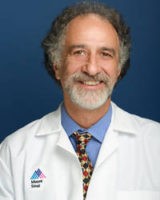22 Sep ENT Surgeon Manages Middle Ear Cholesteatoma Removal In One Surgical Procedure
MedicalResearch.com Interview with:
Eric E Smouha, MD
Professor, Otolaryngology
The Mount Sinai Hospital
New York Eye and Ear Infirmary of Mount Sinai
MedicalResearch.com: Would you tell us a little about yourself? How did you become interested in ENT and specifically middle ear problems?
Response: I am a neurotologist, i.e. , ENT physician specialized in disorders of the ear and skull base. Neurotologists treat problems of the middle ear and inner ear. Middle ear problems are interesting because they are prevalent, and surgery frequently results in restoration of function.
MedicalResearch.com: What is meant by a cholesteatoma?
Response: Cholesteatoma is a specific disorder of the middle ear. Skin from the ear canal becomes trapped inside of the eardrum. It grows to form a cyst, and incites an inflammatory reaction.
MedicalResearch.com: How common are they? What are the symptoms?
Response: Ear infections are very common in children. Cholesteatoma is a complication of ear infections that fortunately does not occur too often. The earliest symptom of cholesteatoma is hearing loss. Sooner or later there will be an infection, with malodorous discharge.
MedicalResearch.com: How do they form?
Response: Skin from the ear canal becomes trapped in the middle ear. New skin forms and becomes a cyst or benign tumor. Over time, the cholesteatoma will enlarge to fill the mastoid, the bone behind the ear. As the cyst grows it starts to destroy the bone and spread to places outside of the ear.
MedicalResearch.com: What are the complications of an untreated cholesteatoma?
Response: In some patients, a persistent bacterial infection will develop, with foul smelling discharge. Complications occur when the infection spreads to other places, like the inner ear, causing vertigo or nerve deafness, the facial nerve, causing facial paralysis, or the brain, causing meningitis.
MedicalResearch.com: Would you explain the benefits of a single surgical procedure to remove a cholesteatoma? How does this single surgery differ from more traditional two-step procedures?
Response: Many surgeons traditionally treat cholesteatoma with 2 operations–the first to remove the disease, and the second to treat the hearing loss and look for recurrence. I try to do the surgery in a single stage whenever possible. I remove the disease completely, I often open the mastoid bone to eliminate places for recurrence to form, and I try to repair the hearing at the first sitting. This single-stage management is successful about 85% of the time, and our recurrence rate is lower than what others have published in the literature.
MedicalResearch.com: Is there anything else you would like to add?
Response: We have also adopted the use of endoscopes–small glass telescopes–to look around corners and into small spaces. This has allowed us to do less invasive surgery, and to ensure that we don’t leave any residual disease behind.
Cholesteatoma is a challenging disease, and does not behave the same way in every patient. The treatment needs to be tailored to each individual, and is based on the extent of the disease, the anatomy of the patient, and the presence of complications. The decisions that have to be made at surgery make the treatment interesting and rewarding.
I have given a course on the surgical management of cholesteatoma at the American Academy of Otolaryngology with 2 of my colleagues every year for the last 16 years, and this has been an excellent opportunity to share our experience with resident trainees and with our professional colleagues.
MedicalResearch.com: Thank you for your contribution to the MedicalResearch.com community.
Citation:
Note: Content is Not intended as medical advice. Please consult your health care provider regarding your specific medical condition and questions.
More Medical Research Interviews on MedicalResearch.com
[wysija_form id=”5″]
Last Updated on September 22, 2016 by Marie Benz MD FAAD

